The Secret Sauce of Reading Success: Six Syllable Types
What do the six syllable types and secret sauce have in common? They are both essential for an amazing experience!
Were you taught the six syllable types as a kid? I had a super hard time learning to read and it wasn’t until I was in college taking a literacy course that I learned/ understood what the six syllable types were!!
The six syllable types are the keys to unlocking reading success for your students. Today, I am going to go over what the six syllable types are, why they are so important, and what you can do today to get your students reading with success!
So, are you ready to learn all about the secret sauce of reading success?!
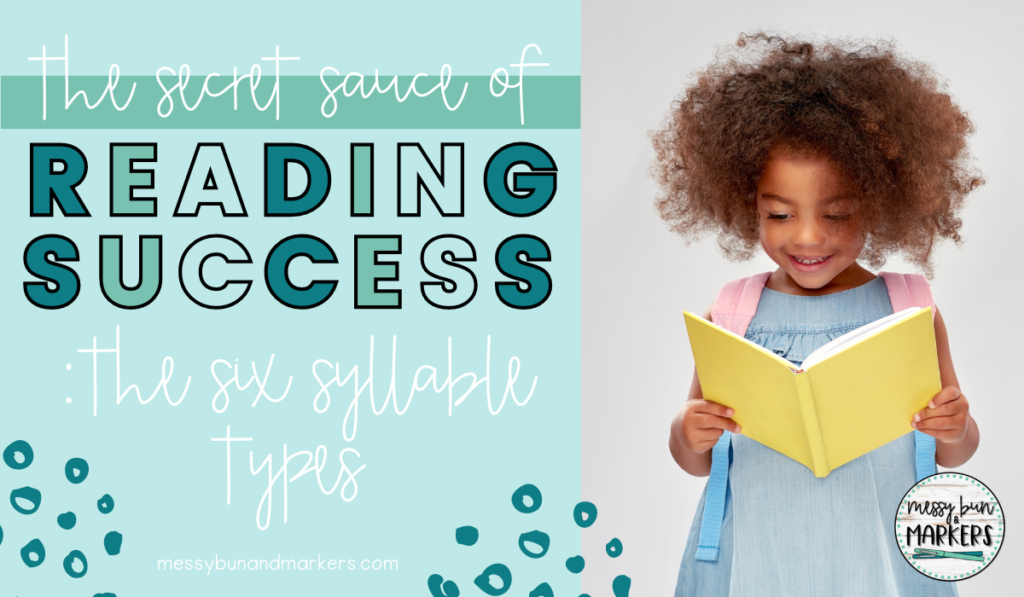
As an elementary teacher, you are a reading teacher. And I think it’s important to recognize that you teach reading every single day in everything that you do!
But were you ever taught HOW to teach the six syllable types?
Once you know how to teach the six syllable types you will see so much growth in your students’ reading!
Trust me, I’ve been there. I used to wonder what I was supposed to teach during small group literacy.
Does this sound like you, I would pull a group and have them read a leveled text, then ask them some questions about it and that’s it…
Completing my master’s as a reading specialist really opened my eyes to a more balanced literacy approach that all teachers should know about. I love helping teachers like you figure out what literacy centers work best for your students and show you exactly what to teach at the teacher table!
Check this out if you want to learn more about How to Run Literacy Centers Like a Pro,🙂 I’ll send you my free guide to setting up and running literacy centers in your classroom with success!
What are the six syllable types?
The six syllable types are the key to unlocking reading success for your students. They are Open Syllable, Closed Syllable, Magic E, R-Controlled, Vowel Teams, and Consonant -le.
This overview will help you understand what each of the syllable types are and the progression of when to teach each syllable type. I am creating a blog series that will be an in-depth look at each syllable type and how to teach them.
Six Syllable Types: Closed Syllable
Closed syllable is the first syllable that I teach. These words have short vowel sounds and are closed in by a consonant at the end. Example: cat.
Teaching students to recognize this syllable is important because it will help they sound out unfamiliar words that follow the same pattern.
Open Syllable Example
You can teach open syllable next. Comparing closed syllable words to open syllable words will help your students understand the difference. An open syllable example is the word ‘go’. The word ends with a vowel and the vowel says its name.
I like to use sticky notes on a door to show my students the difference between open and closed syllables. I place ‘go’ on my door because it is an open syllable, when I close the door ‘go’ matches up with a ‘t’ and becomes a closed syllable and makes the word ‘got’.
Magic e-rule words
This syllable type had a lot of different names. For younger students, I usually call it Magic e. This is because we see an e at the end of the word that is silent but the vowel says its name, long vowel sound. I have also seen this called Bossy e, Silent e, and Vowel-Consonant-e.
You will want to teach VCe words after you have taught closed syllable words that use short vowels. I have students mark up their VCe words by putting a macron over the first vowel and a slash through the silent e at the end. This draws students’ attention to the fact that the vowel will make a long sound. Students must practice with the scaffolds first, then continue practicing reading VCe words without the mark-ups and most importantly in connected text.
If you are looking for Vowel-Consonant-e decodable readers, check these out! These Long A decodables have 5 decodable stories and lesson plans that tell you exactly what to say! Same with these Long I deodables. Boost your students’ confidence in reading by using these amazing decodable readers!
R controlled vowels rules
Next up is the R-controlled syllable. This is when the r changes the sound of the vowel it is next to. Examples are the /ar/ sound in car, /or/ sound in for, and the /er/ sound in her, fur, and bird.
Lots of practice with Bossy R is important. I have examples of each R-controlled type on my vowel valley so that students can easily reference them while reading and writing.
Vowel team syllables anchor chart
These syllable type posters are posted in my classroom. I love using them for reference, and having my students use them while they are reading and writing.
Vowel teams, or vowel digraphs, are another of the six syllable types. This syllable type is made up of vowels, or vowels working with consonants, to make a certain sound. Vowel digraphs need to be explicitly taught.
We often put pairs of vowel teams together that make the same sound but have different spellings. For example, ai and ay both say /ā/, we use ai at the beginning or middle of a word, and ay at the end of a word.
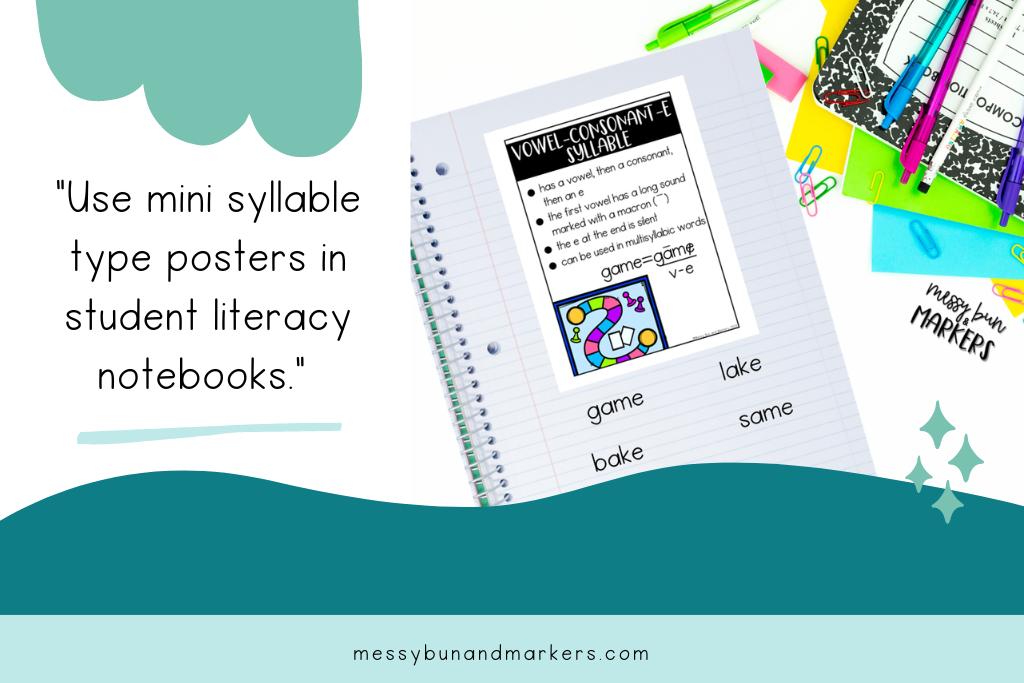
Consonant le syllable words
The sixth syllable type is consonant -le. This syllable type has a consonant followed by le. The consonant and the l blend together and the e at the end is silent. This syllable type is only seen at the end of multisyllabic words.
I always teach this syllable last. You want to make sure that your students have a grasp of the single-syllable types before moving into multisyllabic words. Even then, I start with two-syllable words that contain two closed syllables first, like in the word picnic.
Why Teach the Six Syllable Types?
Getting trained in Orton-GIllingham opened my eyes to why teaching syllable types is so important. Teaching the six syllable types will help guide you in how to teach explicit phonics instruction.
The Science of Reading confirms what Orton and Gillingham knew to be true, you must have systematic and explicit phonics instruction. And in order to do that you need to teach the syllable types.
Teaching these is like giving your students the keys to reading! I know that you want your students to be successful readers, and teaching them the syllable types is the way to do it!
How to Use the Six Syllable Types in the Classroom
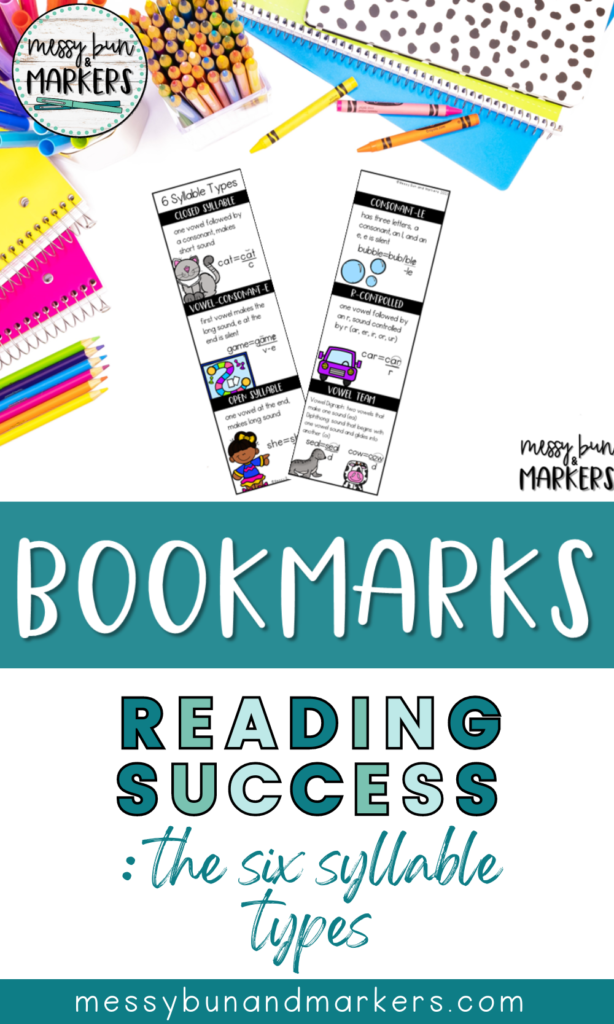
So, what can you do now to ensure your students start reading with success?
Here are three things you can do to promote reading success for your students!
Create syllable type posters for your students to reference while they are reading and writing independently around the classroom.
Create bookmarks for students to have on hand while reading around the room. This quick reference will give your students a handy key to decoding unknown words!
Use student notebooks to store phonics information taught during small group reading. My students have a tab for ‘Syllables’ where we cut and paste a mini syllable type poster into our notebooks. Then students write example words that follow those patterns!
Elevate your students’ reading and writing skills with these Syllable Type Posters, which include bookmarks and mini-posters perfect for student notebooks!
The Six Syllable Types truly are the secret sauce to understanding reading and writing in English. Teach these to your students and watch the lightbulb go off! Your students will be begging for reading time with their new-found success:)
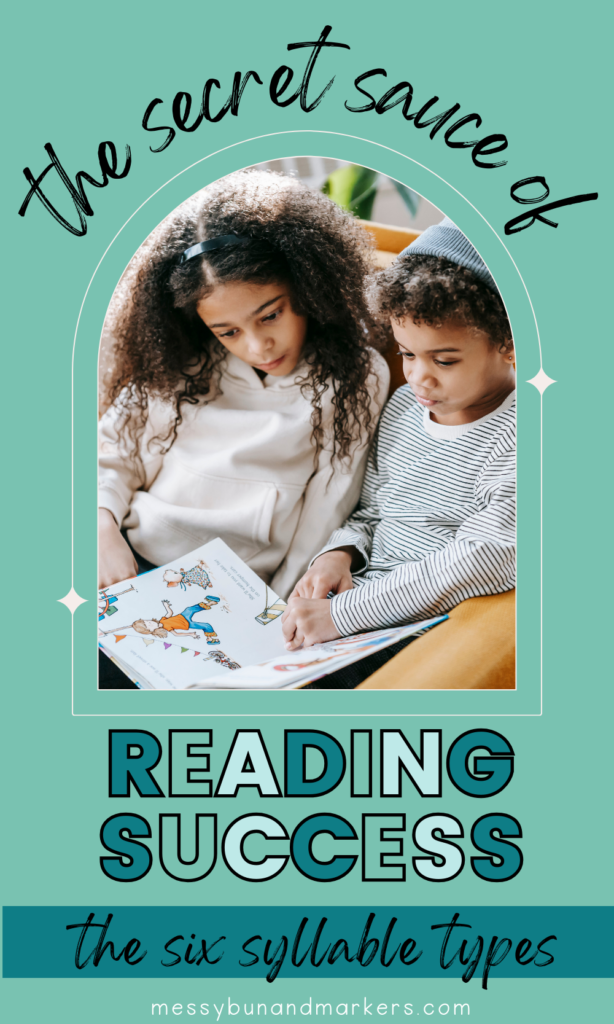
Looking for more tips and tricks to get your students reading with success?!
Check out this post where I reveal my secrets to creating literacy centers that your students will love!
Or this post all about how to keep student papers organized with Ketchup Folder Labels!
Happy reading!! 📚


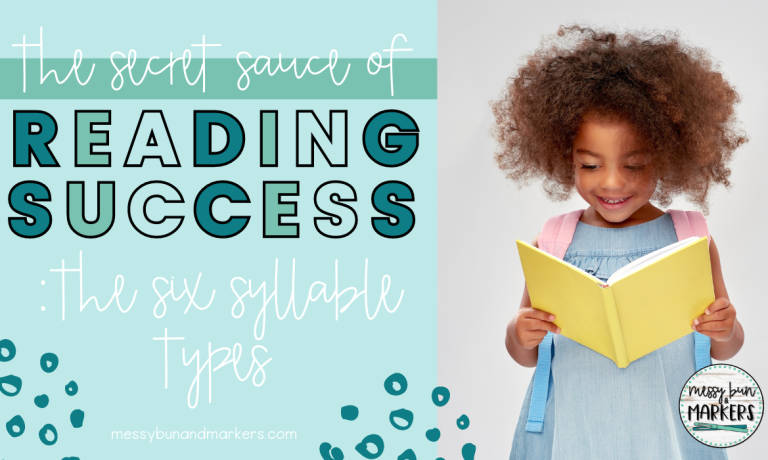
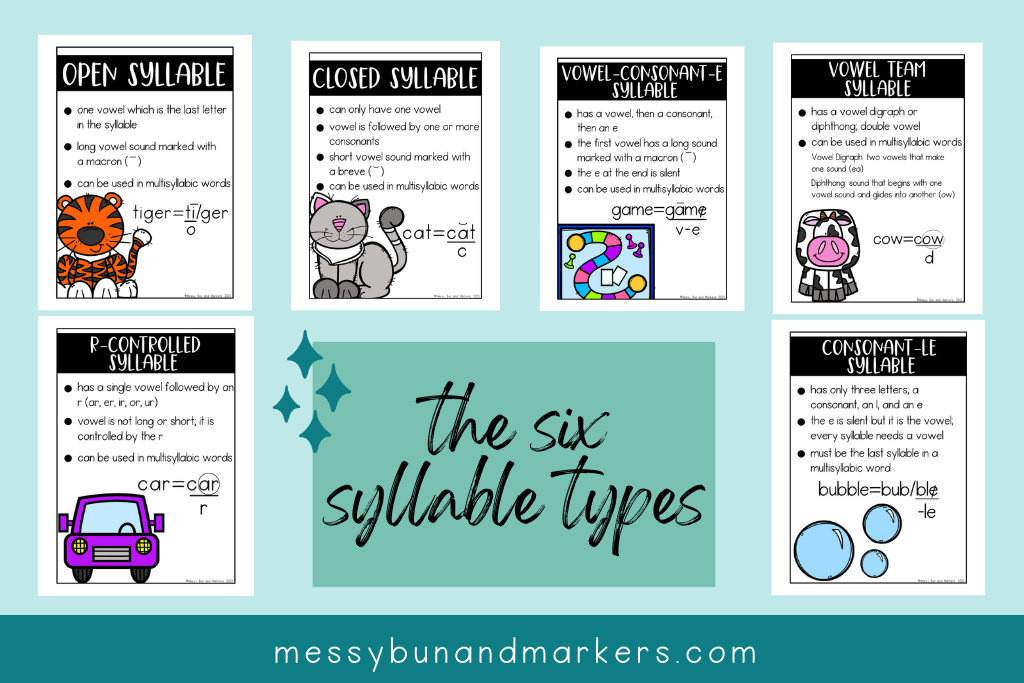
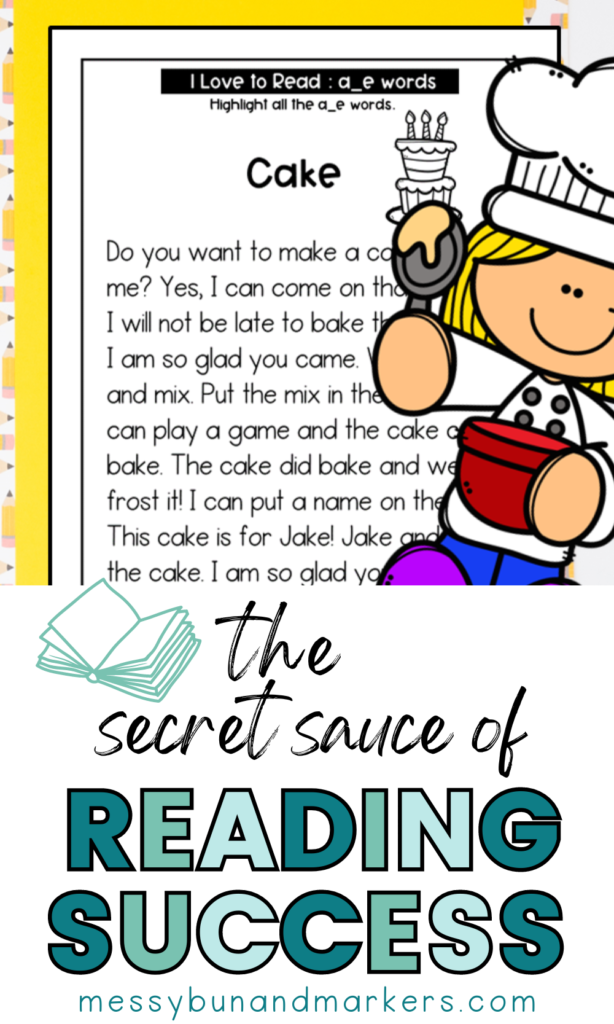

One Response